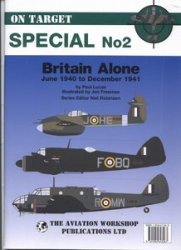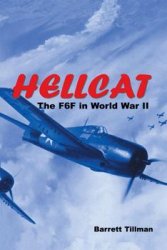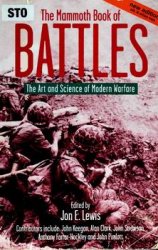Iwo Jima and Okinawa had a powerful effect on those planning the eventual U. S. invasion of Japan. If a tiny postage-stamp island could devour more than 20,000 men, what would a full-scale invasion of Japan cost?
The Cost of an Invasion, japan could stiii muster about
10,000 planes, perhaps half of them kamikazes. Two million soldiers could be expected to defend the home islands. For those estimating American casualties in an invasion of Japan, the numbers were no longer in the thousands but in the millions.
Bombing Raids. The united states still hoped that heavy
Bombing raids might persuade Japan to suirender. But as spring approached, B-29 raids had had only limited success against Japan’s industrial base. Daylight targets were generally covered by clouds. Radar, still in its infancy, was unreliable. The United States was losing plenty of planes, too, both to enemy fire and to accidents.
General Curtis LeMay decided to change the U. S. bombing strategy. Instead of going for specific industrial
Targets by day, LeMay developed a plan to bomb civilian areas around industrial sites. American planes would rain incendiary bombs on heavily built-up areas. These firebombs could easily create firestorms (see sidebar on page 124) in packed residential districts.
On the night of March 9, 1945, Tokyo was the target. LeMay put 334 bomb-laden B-29s into the air. For three hours, the bombers swarmed over Tokyo, releasing their terrible cargo. Tokyo was soon blazing. Sixteen square miles of the city—with 100,000 inhabitants in each square mile—became an inferno. Water in the city’s small canals literally boiled. Between 80,000 and
100,000 people died. With hundreds of thousands of buildings in cinders, more than a million people were left without homes.
The civilian bombing campaign was now part of the American strategy in the war against Japan. But though the general of the U. S. Army Air Force claimed that the incendiary attacks were a bargain, massive bombing raids weren’t exactly cheap.
This dilemma could be solved by a single weapon that could reap as much destruction as hundreds of bomb-laden planes. That very weapon was now ready.
Atomic Success, since 1942, U. S. scientists had been
Laboring on a secret atomic bomb. Instead of TNT, the bomb would use the explosive power of nuclear fission to achieve mass destmction. Early on, the bomb was developed for possible use against Germany. Now the U. S. military and the president hoped that the powerful new weapon would shock the Japanese into surrender.
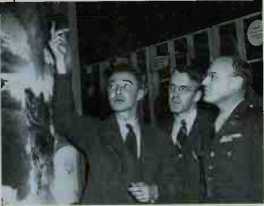
In 1932, a British scientist, James Chadwick, discovered an atomic particle, the neutron. This particle could penetrate the nucleus of an atom and cause it to separate. The divided atom, in some cases, would
Throw out other neutrons to split other atoms: A chain reaction would occur. In each chained event, as each nucleus broke down, more energy, and therefore more destructive power, would be released.
Scientists found that these chain reactions occurred only in radioactive materials. In the late 1930s, German scientists achieved good success as they bombarded uranium (a radioactive element) with neutrons. Their success, however, caused anxiety among many physicists in other countries, including the United States.
One of them was Albert Einstein. Einstein eventually wrote a letter to then-President Franklin Roosevelt, warning him of the incredible destructive power of a weapon
Based on a nuclear chain reaction. It was not, however, until 1942 that Americans began work on their atomic weapon. Under the Manhattan Project, more than 600,000 people participated in building a weapon of astonishing killing power.
Many of those who participated were torn about creating such a weapon. Robert Oppenheimer, who headed the Manhattan Project, watched with trepidation as the first atomic bomb was exploded:
“We knew the world would not be the same. A few people laughed. A few people cried. Most people were silent. I remembered the line from the Hindu scripture—the Bhagavad Gita. [The god] Vishnu...says, ‘Now I am become Death, the destroyer of worlds.’’’
An atomic bomb explodes over Nagasaki. Japan soon swrendered.
In July 1945, scientists began the final phase of the Manhattan Project (see sidebar) at an old ranch house in southern New Mexico. On July 16, the first atomic bomb was successfully tested in the nearby desert.
President Truman immediately approved plans to drop the bomb on targets in Japan. After much discussion, Hiroshima was selected as the first target. Hiroshima was chosen because it had not been hit by previous large-scale B-29 raids. U. S. military officials believed the Japanese would be more impressed by an attack on a city that was still intact.
Kyoto was another possible site, but the historic city was rejected because it was considered too beautiful to be destroyed.
Hiroshima Destroyed. At 8:i5 a. m. on August 6,1945, an
American B-29 bomber piloted by Colonel Paul Tibbets ferried the bomb to Hiroshima. There it was dropped on target, e. xploding about 2,000 feet above the ground. The heat at the point of detonation was hotter than the surface of the sun. The explosion created a monstrous shock wave.
“It was as if the sun exploded."
—A Hiroshima resident
A fireball immediately formed, which emitted atomic radiation and searing heat. People close to ground zero were vaporized. Thirteen square miles of landscape was reduced to ashes. Nearly 63 percent of all the buildings in the city were destroyed. Immediately or very shortly afterward, 70,000 to 80,000 people died. One survivor later wrote:
" ...there were so many injured people that there was almost no room to walk. This was only a mile from where the bomb fell. People's clothes had been blown off and their bodies burned by the heat rays. They looked as if they had strips of rags hanging from them. They had water blisters which had already burst, and their skins hung in tatters... Some had lost their eyes. Some had their backs torn open so you could see their backbones inside. They were all asking for water."
Nagasaki Destroyed, Japan did not immediately surrender after the attack. So on August 9, another bombladen B-29 departed for the Japanese city of Kokura. However, that city was spared because of heav' cloud cover. The bomb was instead dropped on Nagasaki.
Though the destimction of Nagasaki was not as extensive as Hiroshima, the bombing had another tragic
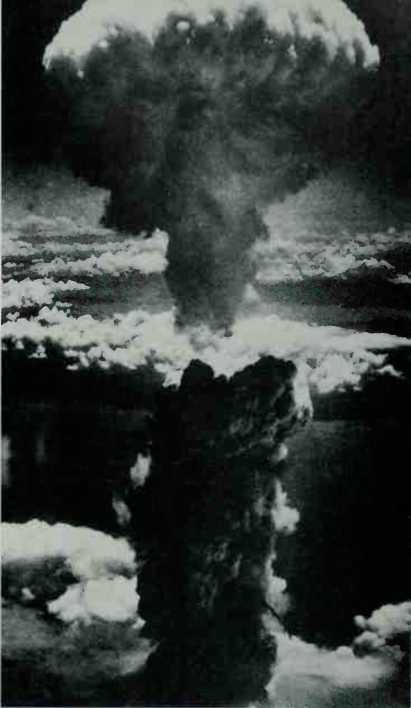
Consequence. About 2,500 of the people in Nagasaki were forced laborers from Korea. These people had been taken to Japan against their will. The bomb killed about half of them, along with more than 100 American prisoners of war.
Soviets Declare War. On the same day that Nagasaki was destroyed, the Soviet Union declared war on Japan. During the next four days, the Soviets destroyed the Japanese Army in China and took over most of occupied Manchuria. The Red Army was moving across the Yalu River into Korea when Japan finally surrendered to the Allies on August 15.
World War 11 was finallv over.
Aftermath In the aftermath
Of World War II, the Allied powers sought to carve out areas of influence both in Europe and the Pacific. The Soviet Union had been particularly savaged by the Germans during the war and had no intention of letting itself be trampled again.
The Curtain Comes Down. Led by the aggressive and
Crafty dictator Joseph Stalin, the U. S.S. R. determined to gain political control of the Eastern European countries that surrounded it. It sought to build, as Winston Churchill put it, an "Iron Curtain” around its neighbors.
For the United States and other countries that had led a "crusade for democracy,” the lowering of the Iron Curtain following the war was a crushing blow.
Berlin Blockade. The Cold war, a standoff between the Communist world and the Western democracies, began—and would end—in the city of Berlin. Many of the Cold War’s subsequent crises would be played out in this city during the coming decades.
In 1945, Berlin became a divided city. At the end of World War II in Europe, the Allies had carved up Germany and its capital into sectors. Each of the Allied powers occupied one sector. After a period of time Germans, including Berliners, voted for the type of postwar government they wished to have.
Stalin had absolutely no intention of abiding by election results that went against the Communists. He wanted control of all of East Germany, and since the city of Berlin was within East Germany, he wanted all of Berlin, too. He wanted the Allies out of the city. To get them out, Stalin established a blockade. As of June 22, 1948, no food or supplies could enter Berlin over land from the West.
The United States was not about to let West Berlin slip away to the Communists. It organized an airlift to support the besieged Berliners. A fleet of C-47 and C-54 cargo planes carried tons of fuel and food into Berlin. The Soviets did not immediately relent. They maintained the blockade for nearly a year, calling an end to it only in May 1949. The wrangling over Berlin did not end there, however. The city’s division would be the source of yet another crisis in the early 1960s.
Reds AMDNG Us. in the late 1940s, several events called attention to the activities of Communists in the United States. In 1949, British agents revealed that Klaus Fuchs, a physicist who had worked on the atomic bomb, was a spy.
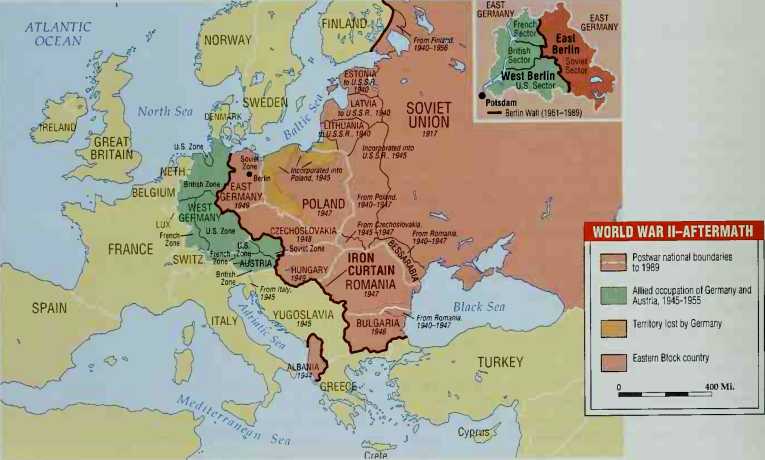
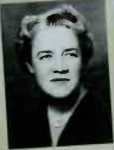
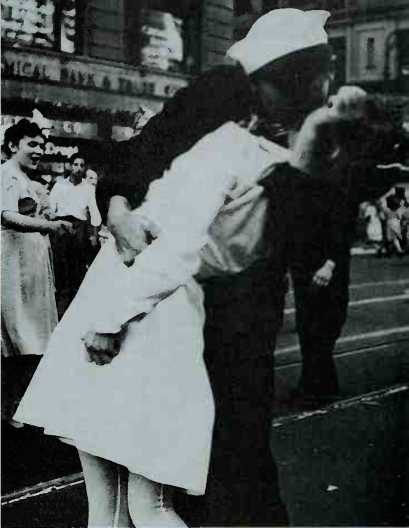
A sailor kisses a nurse on Times Square. The end of the war brought overwhelming relief to those whose lives hung in the balance.
The revelations about Fuchs followed hard upon the sensational trial of an American diplomat, Alger Hiss. Hiss was also accused of being a Communist spy. The evidence presented against him was weak and it was unclear at the time whether Hiss had done any real spying or not.
These events—and the generalized fear of communism—triggered a spree of investigations conducted by the House Un-American Activities Committee (HUAC). In addition to the House committee, a Republican senator, Joseph McCarthy of Wisconsin, began to hold hearings after claiming that communists had infiltrated all walks of American life. The committee interrogated hundreds of Americans from every walk of life. Film directors, government employees, and army officers were investigated. Many hearings were based on no more than shreds of evidence. People were compelled to name friends who they knew had associations with the Communist Party. Many of those interrogated ended up with their reputations tainted, their careers in shambles. A few committed suicide.
As the hearings wore on, the sheer nastiness of the procedures—particularly Senator McCarthy’s meanness—caused a few people to speak out against this blatant violation of the spirit of the Constitution. Republican Margaret Chase Smith scolded her fellow Senators in 1950:
“Freedom of speech is not what it used to be in America. ”
— U. S. Senator
Margaret Chase Smith, June 1, 1950
"/ think it is high time that we remembered that we have sworn to uphold and defend the Constitution. I think it is high time that we remembered that the Constitution, as amended, speaks not only of the freedom of speech hut also of trial by jiuy instead of trial by accusation...."
"Those of us who shout the loudest about Americanism in making character assassinations are all too frequently those who, by our own words and acts, ignore some of the basic principles of Americanism: the right to criticize; the right to hold unpopular beliefs; the right to protest; the right of independent thought...."
A Threatening World. Immediately following World
War II, the United States had banked on the atomic bomb
As its ultimate defense. With it, the nation and its president felt they could stave off any threat from any country. But the American ace in the hole became decidedly less impressive in the summer of 1949. In August of that year, U. S. Air Force sensors picked up strange elements in the Soviet atmosphere. The Russians had exploded their own bomb. The Cold War was now a lot hotter.
If the troubles with the Soviet Union weren’t enough, the United States was now facing another potential threat. The Chinese had been waging a civil war since the 1920s (see sidebar on page 118). In the conflict, the United States had backed Chiang Kai-shek, whose Nationalist forces opposed the Communists led by Mao Tse-tung. In 1948, however, communist forces had won a series of major victories that had, for all practical purposes, ended the war. The following year, Chiang Kai-shek was forced to flee to Formosa (Taiwan), a nearby island. The United States had one less friend and one more powerful enemy in Asia.
In East and Southeast Asia, too, communist mo’e-ments were on the rise. A movement for independence in colonial Vietnam turned into a full-scale war in 1946, pitting France against communist Victminh forces led by Ho Chi Minh.
Trouble was brewing in Korea, too—trouble that would soon be front-page news in America.




 World History
World History
